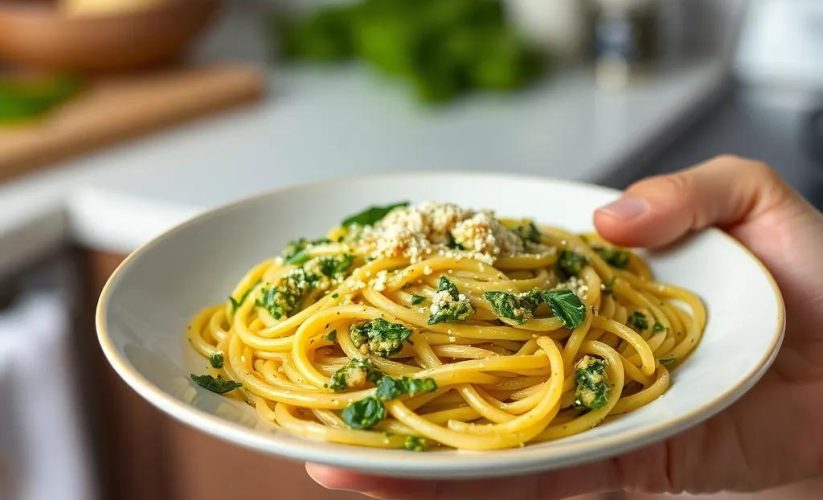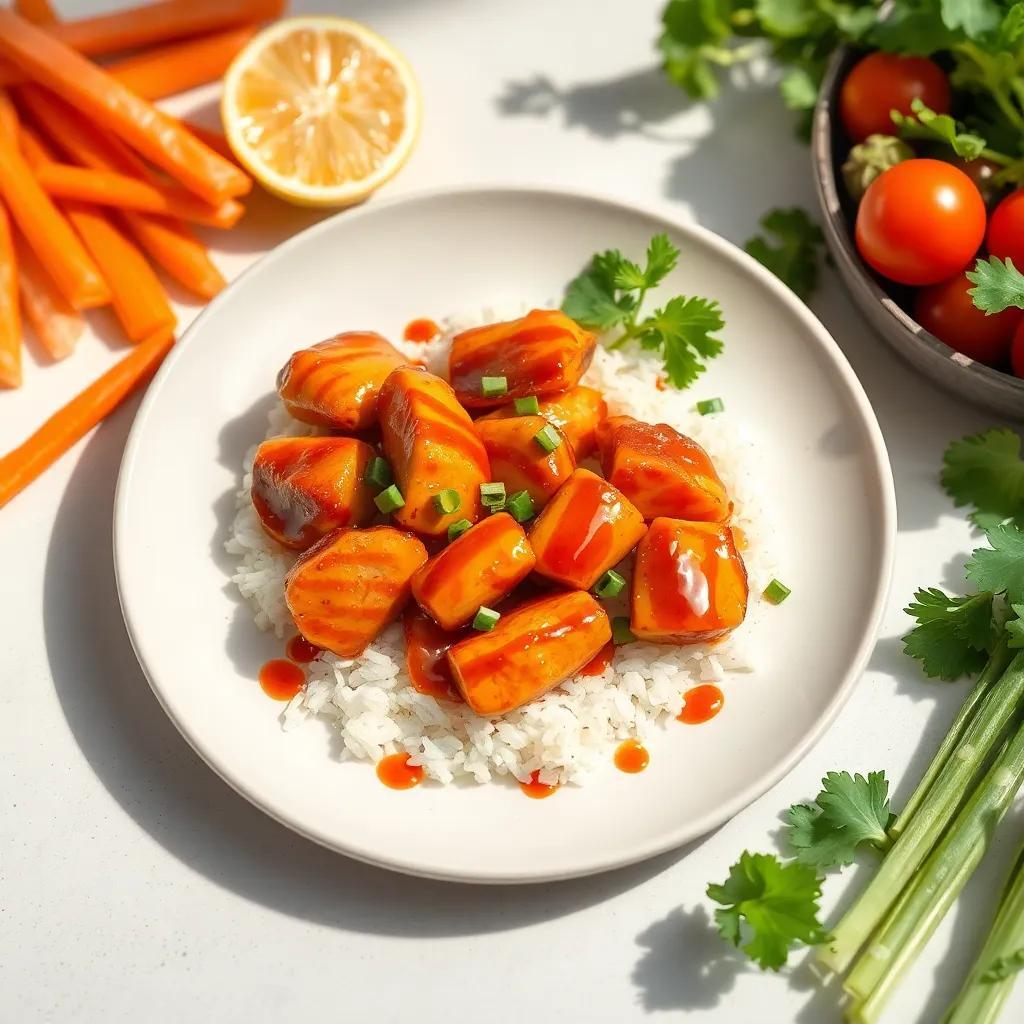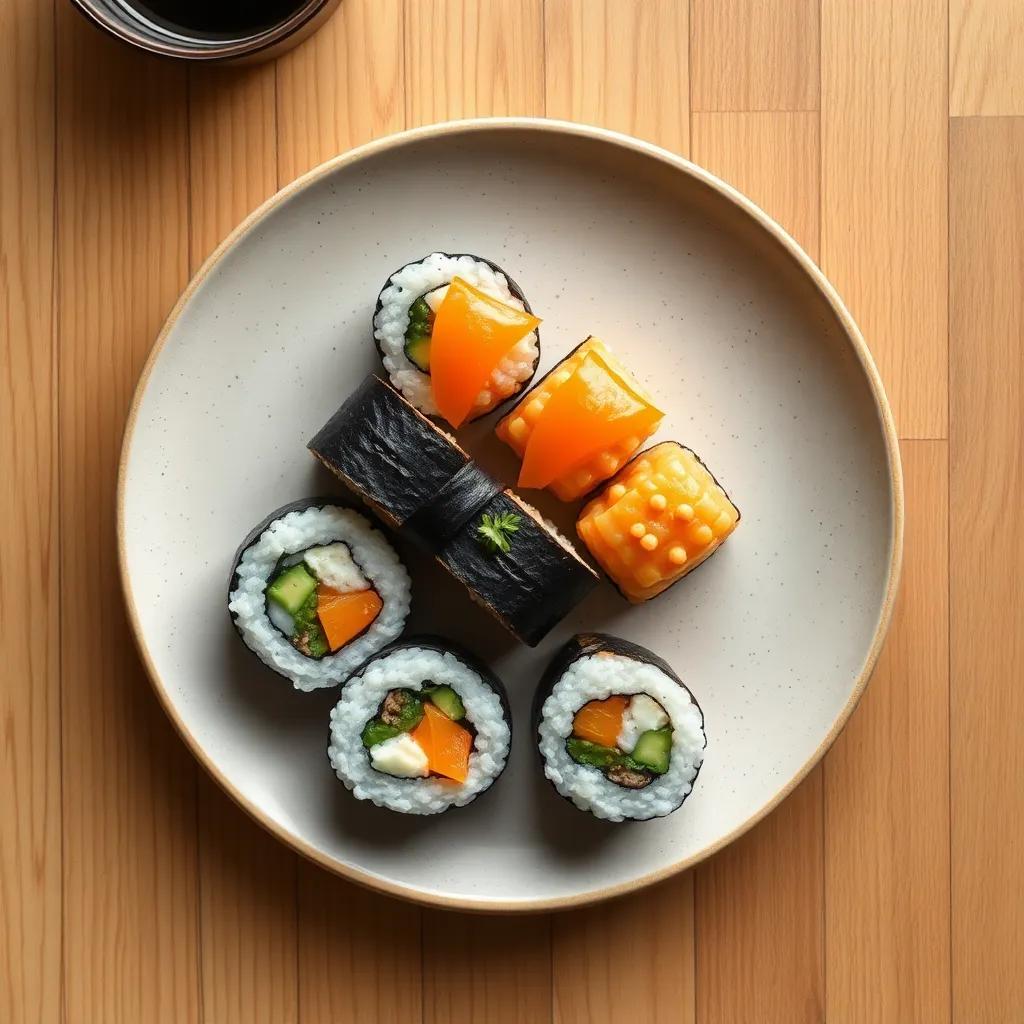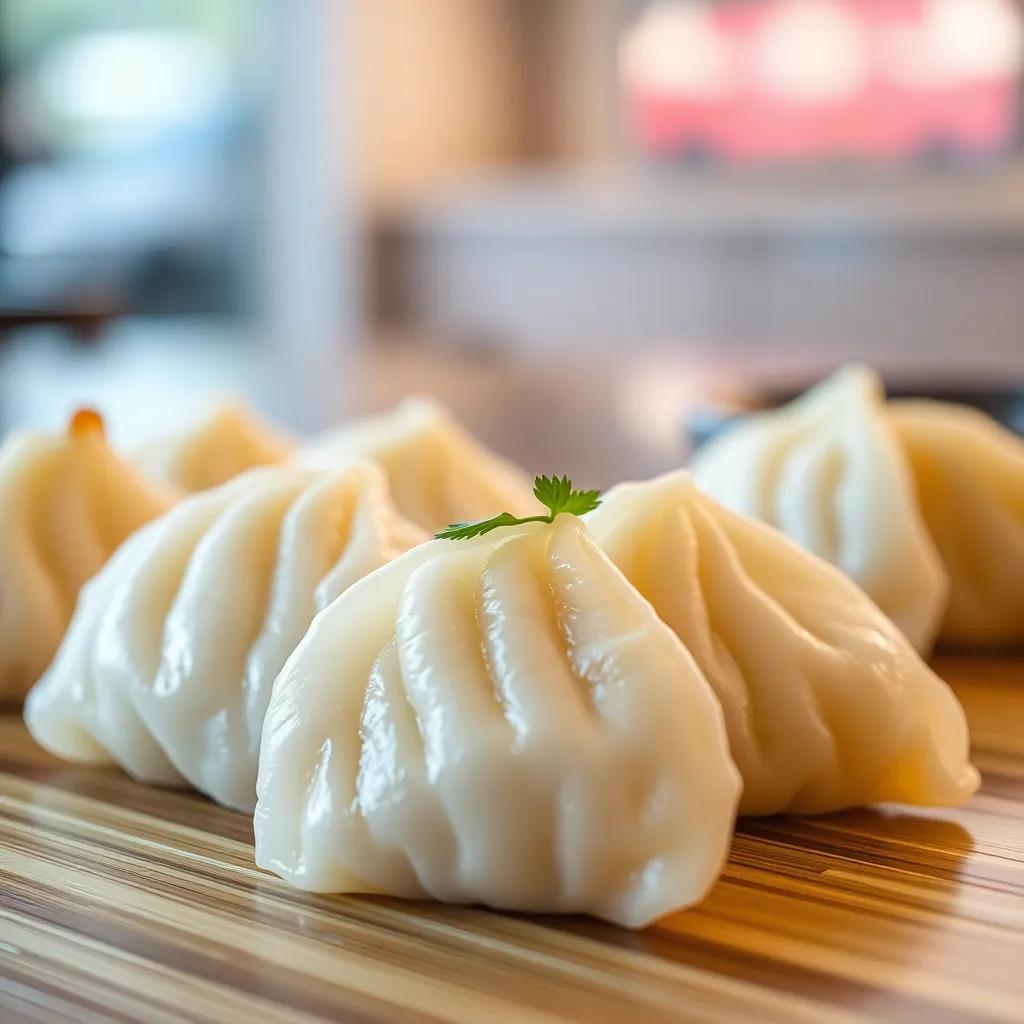Master the Art of Yakitori: Easy, Flavor-Packed Japanese Skewers

Master the Art of Yakitori: Easy, Flavor-Packed Japanese Skewers
🌍 Cuisine: Japanese
⚙️ Difficulty: Easy
Ingredients
Nutrition Facts
210
Instructions
- Soak the bamboo skewers in water for at least 30 minutes to prevent burning during grilling.
- Cut the boneless chicken thighs into bite-sized pieces, about 1 to 1.5 inches.
- Prepare the yakitori sauce by combining soy sauce, mirin, sake, and sugar in a small saucepan. Bring to a simmer over medium heat and cook for 5–7 minutes until slightly thickened. Remove from heat and set aside.
- Thread the chicken pieces onto the soaked skewers, alternately with pieces of green onion (scallion) as desired.
- Preheat a grill or grill pan over medium-high heat. Lightly oil the cooking surface to prevent sticking.
- Place the skewers on the grill and cook for about 3–4 minutes on each side, brushing generously with the prepared yakitori sauce as they cook.
- Continue cooking and turning the skewers, applying more sauce until the chicken is cooked through and nicely caramelized (internal temperature should reach 165°F / 74°C).
- Remove from grill and let rest for a couple minutes.
- Optionally, sprinkle the skewers with shichimi togarashi for a spicy kick before serving.
- Serve hot as a delicious appetizer or snack with steamed rice or Japanese beer.
Serving Suggestions
- Serve yakitori skewers alongside a bowl of steamed white or brown rice for a satisfying meal.
- Pair with a light Japanese beer or sake to complement the savory flavors.
- Accompany with a simple cucumber and wakame seaweed salad dressed in rice vinegar.
- Garnish with chopped fresh scallions or sesame seeds for extra texture and color.
- Include pickled ginger or daikon radish on the side for a refreshing contrast.
- For variety, try adding shiitake mushrooms or bell pepper pieces on the skewers.
- Serve with a dipping bowl of extra yakitori sauce for those who enjoy dipping.
Table of Contents
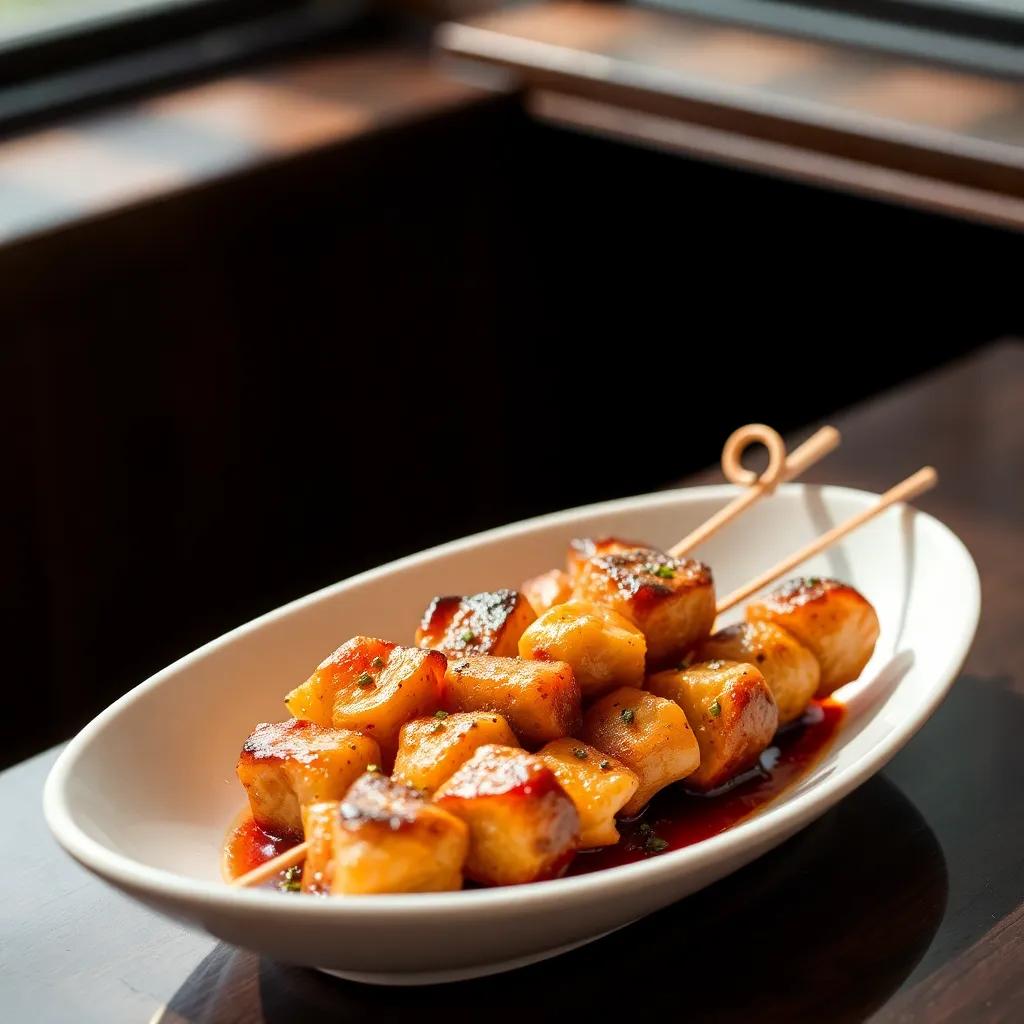
Intro
Yakitori offers a wonderful gateway into Japanese home cooking—simple yet deeply satisfying. These skewers burst with savory, slightly sweet flavors that marry beautifully with tender, juicy chicken, making each bite an enjoyable experience. What makes yakitori especially appealing is how accessible it is: with just a handful of pantry staples and minimal prep time, you can create something that feels special without the fuss.
Perfect for casual gatherings, weekend barbecues, or a cozy night in, yakitori serves as a versatile appetizer or snack that pairs effortlessly with drinks or rice. Its interactive nature—threading the meat, basting with sauce, and grilling—makes it a fun and engaging dish to prepare, whether solo or with friends. Plus, the tantalizing aroma that fills your kitchen as these skewers cook is sure to whet everyone’s appetite.
Whether you’re ducing yourself to Japanese flavors or simply craving a quick yet impressive dish, mastering yakitori brings a little authentic flair and a lot of deliciousness to your table.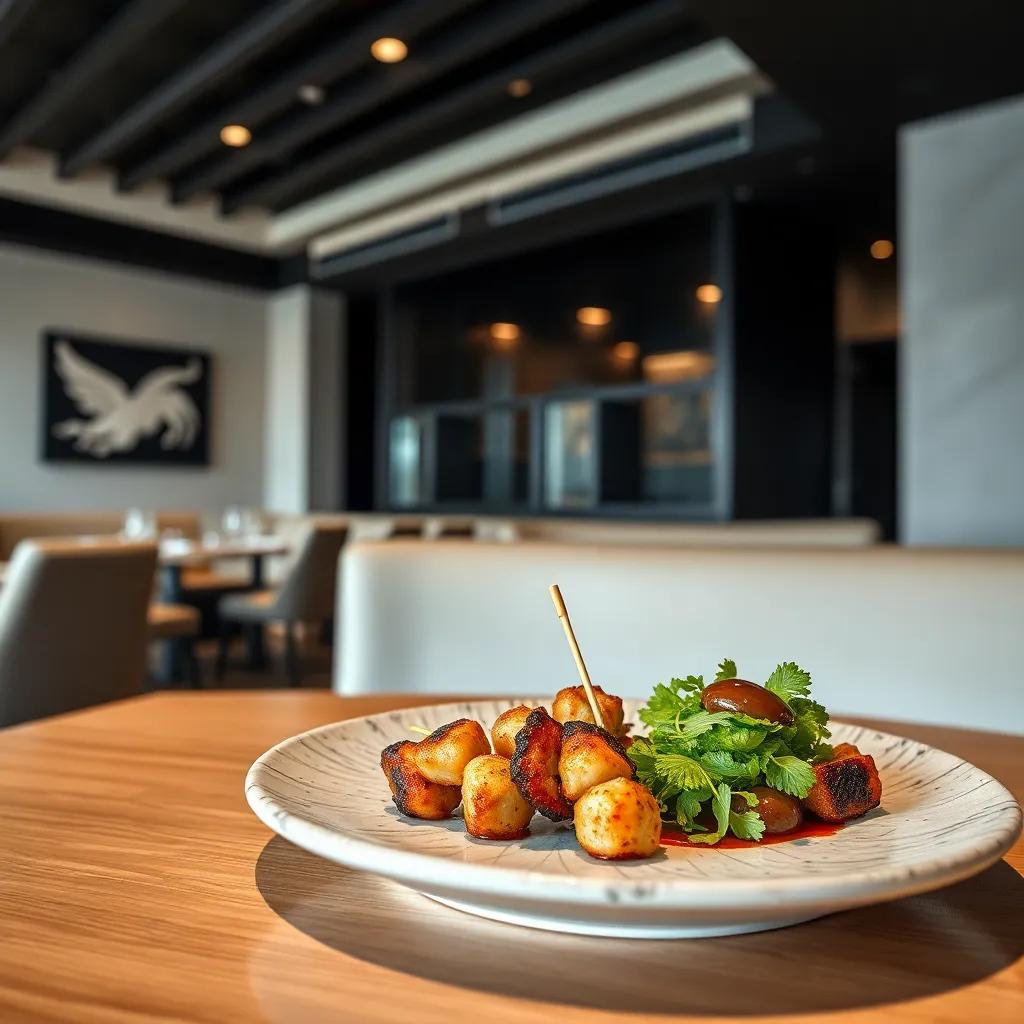
Ingredient Notes
When it comes to crafting authentic and flavorful yakitori, a few key ingredients truly elevate the dish beyond simple grilled chicken. Understanding their roles and how to select them can help you replicate the classic balance of savory, sweet, and umami that makes yakitori so irresistible.
Soy Sauce: This is the backbone of your yakitori sauce, lending deep umami and a salty richness. For best results, choose a high-quality Japanese-style soy sauce such as Kikkoman or Yamasa, which offer a balanced flavor without overpowering saltiness. If you prefer a gluten-free option, tamari is an excellent substitute that maintains the essential savory profile. Avoid overly dark or thick soy sauces meant for braising, as they can alter the texture and color of your glaze.
Mirin (Sweet Rice Wine): Mirin brings a subtle sweetness and glossy sheen to the sauce, balancing the saltiness of the soy and contributing a mild acidity that brightens the overall flavor. When shopping, look for true mirin rather than “mirin-style” seasoning, which can contain added sugars and syrups. If mirin is unavailable, a combination of sake and a teaspoon of sugar can mimic its effect, though it may lack some complexity.
Sake: Less obvious but equally important, sake adds a delicate depth and slight fruity undertone to the yakitori sauce. Using cooking-grade sake crafted for culinary use ensures a clean flavor without harshness. This ingredient also helps tenderize the chicken during marinating and basting. For those avoiding alcohol, a light chicken broth or water can substitute, but the nuanced flavor will be milder.
Bamboo Skewers: The humble skewer is essential not just for presentation but for authentic grilling technique. Bamboo skewers should be soaked in water for at least 30 minutes before use to prevent burning over high heat. If bamboo isn’t at hand, metal skewers are fine, though they won’t imbue the same subtle aroma or assist in even cooking by absorbing heat.
By paying attention to these specialty ingredients and their quality, you’ll set a strong foundation for making yakitori that tastes truly distinctive—melding smoky char, tangy sweetness, and luscious juiciness in every bite. Experimenting with these elements will also open doors to customizing your sauce and skewers to suit your palate and pantry.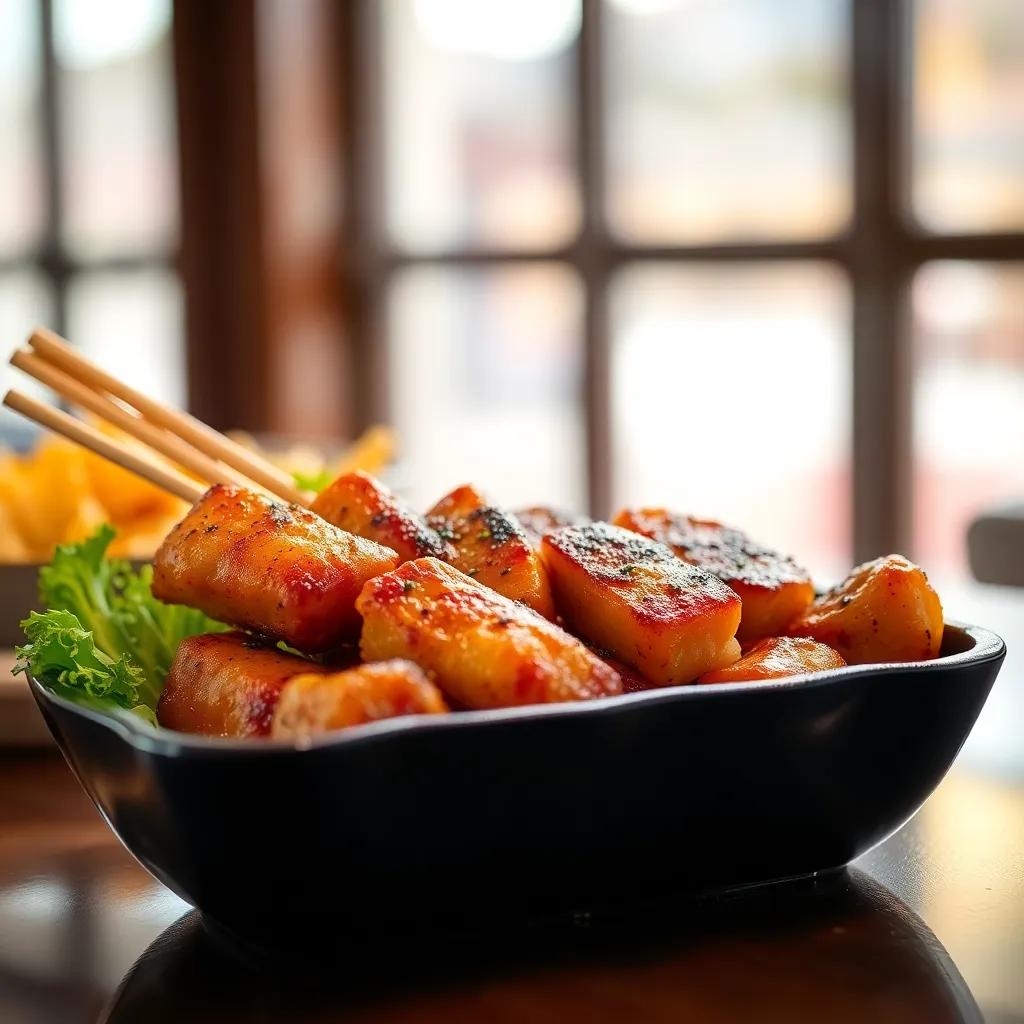
Tips & Variations
Elevate your yakitori experience with a few insider tips that bring out the best in this simple dish. First, don’t rush the grilling—medium-high heat paired with patience allows the chicken to develop that sought-after caramelized exterior without drying out. Frequently basting the skewers with your prepared sauce locks in moisture and deepens flavor, turning each bite irresistibly sticky and savory.
To customize, experiment with different cuts and proteins beyond chicken thighs. Chicken breast can offer a leaner alternative but requires careful watchfulness to avoid dryness. For a richer, more indulgent option, try chicken skin (torikawa) threaded alongside meat—it crisps up beautifully and adds a luscious texture contrast. If you want to venture beyond poultry, pork belly or even firm fish like salmon or swordfish work wonderfully on skewers, soaking up the yakitori glaze with lovely results.
Vegetable variations are endless and a great way to add color and nutrients. Consider threaded shiitake mushrooms, bell peppers, or baby corn, grilled to smoky perfection. Green onions are classic, but swapping in leeks or scallions can subtly shift the flavor profile. For a vegan twist, substitute tofu cubes (preferably pressed and firm) or seitan marinated in the sauce, grilling with vegetables for a fully plant-based yakitori experience. Just be mindful that cooking times vary significantly with these swaps.
For dietary needs, making the dish gluten-free is straightforward—use tamari instead of regular soy sauce and ensure your mirin is free from additives. Those avoiding alcohol can omit sake and replace it with a splash of apple cider vinegar or mushroom broth to maintain umami depth, though the flavor will be somewhat lighter.
Finally, don’t hesitate to adjust the sweetness or heat. Increase sugar or mirin slightly for a richer glaze, or add a pinch of shichimi togarashi or freshly cracked black pepper to introduce warmth and complexity. A squeeze of yuzu or lemon juice right before serving can brighten the skewers and add a refreshing citrus punch.
With these tips and variations, you can tailor yakitori to your taste, dietary needs, and the occasion—transforming humble skewers into a versatile culinary adventure every time.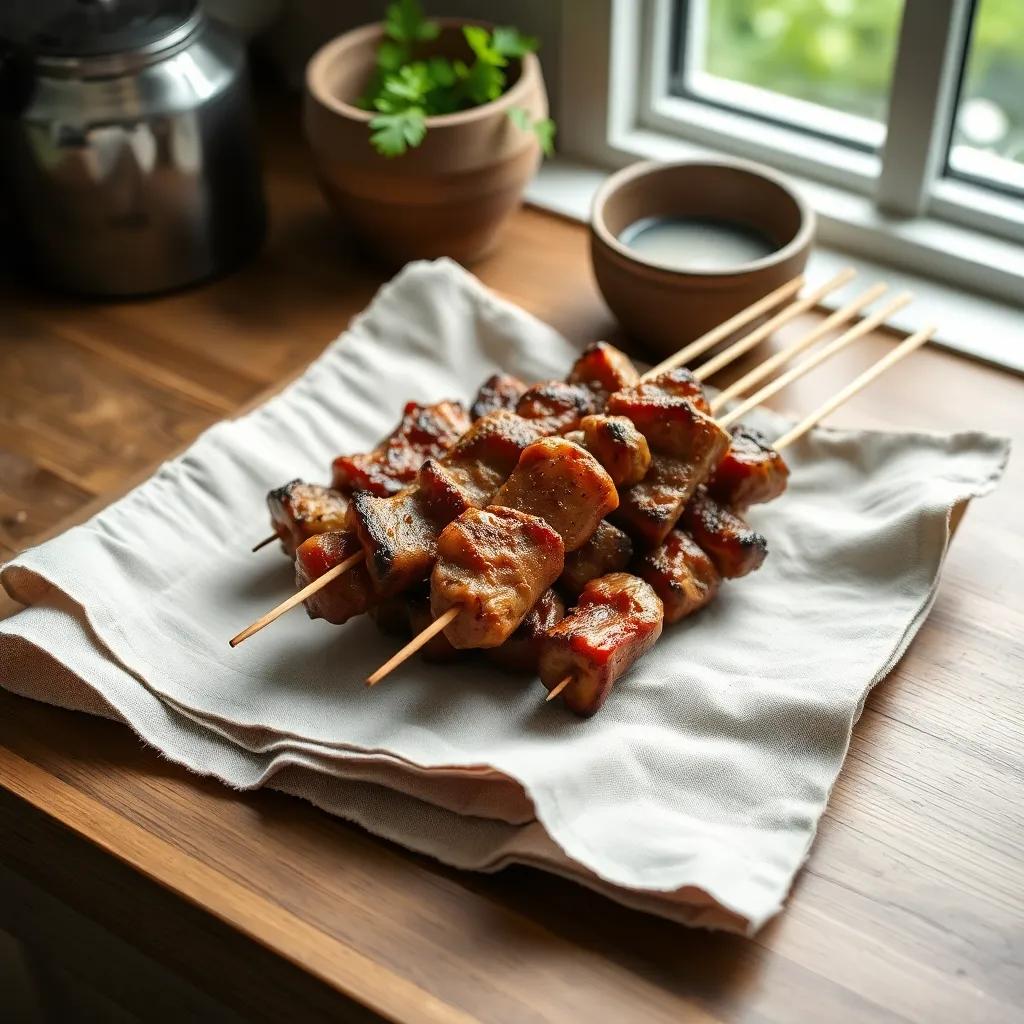
Leftovers & Storage
Leftover yakitori is a delightful treat to enjoy beyond the initial meal, but proper storage is key to preserving its tender texture and bold flavors. To keep your skewers at their best, allow them to cool to room temperature first, then transfer the chicken pieces (preferably off the skewers) into an airtight container. This helps prevent the meat from drying out and keeps the sauce from spreading too thin.
In the refrigerator, properly stored yakitori will stay fresh for up to 3 days. When you’re ready to enjoy the leftovers, gently reheat them using a grill pan or broiler to revive the caramelized glaze and maintain a slightly crisp exterior—microwaving is convenient but may lead to a softer texture and loss of that signature char. If reheating in a pan, applying a light brush of fresh yakitori sauce can refresh the flavors beautifully.
For longer preservation, yakitori can be frozen for up to 1 month. Wrap individual skewers tightly in plastic wrap, then place them in a freezer-safe container or zip-top bag to prevent freezer burn. Thaw them slowly in the refrigerator overnight before reheating using your preferred method. Keep in mind that freezing may slightly alter the texture of the chicken, but the flavorful sauce will help mask any changes.
Yakitori also lends itself well to meal prep and packed lunches. For portable meals, pack cooled skewers with steamed rice and some crisp pickled vegetables in a bento box or lunch container. Including a small container of extra yakitori sauce for dipping will keep the meal lively and vibrant. If transportation time is prolonged, consider insulating your container or adding a reusable ice pack to keep the skewers safe and appetizing.
By following these simple storage and reheating tips, you can savor the delicious layers of sweet-savory yakitori long after grilling day, making it a versatile option that stretches your effort and taste pleasure across multiple meals.
Behind the Recipe
Yakitori is much more than just grilled chicken on a stick—it’s a culinary tradition steeped in history and cultural significance. Originating from Japan’s Edo period (1603–1868), yakitori was initially a humble street food served at yatai (food stalls) offering quick, affordable nourishment for busy city dwellers. Over the centuries, it evolved from simple salted chicken skewers to sophisticated varieties glazed with tare sauce, showcasing the Japanese philosophy of elevating modest ingredients through technique and balance.
This recipe pays homage to that rich legacy by faithfully combining the classic flavors and methods, yet keeping it approachable for the home cook. The choice of boneless chicken thighs and a homemade tare glaze captures the heart of traditional yakitori found in izakayas (casual Japanese pubs), where friends gather to share plates, laughter, and drinks. Each skewer tells a story of communal eating and conviviality—a shared experience that brings people together around sizzling coals.
For many enthusiasts outside Japan, yakitori also represents an introduction to Japanese food culture—an accessible way to connect with authentic tastes and rituals. Preparing yakitori at home, with its engaging process of threading, basting, and grilling, creates an intimate link to this culinary past. Personally, this dish invokes memories of travel and evenings spent exploring Tokyo’s vibrant alleyways, lined with lantern-lit stalls fragranced by smoky meat and spiced sauces.
By mastering the art of yakitori, you’re not just recreating a recipe—you’re embracing a timeless tradition that celebrates simplicity, seasonality, and the joy of sharing good food. Whether enjoyed as a casual snack or the centerpiece of a gathering, yakitori serves as a delicious cultural bridge from Japan’s streets to your own kitchen.
FAQ
Can I use vegetables or other proteins instead of chicken for yakitori?
How do I store leftover yakitori, and how long does it keep?
Can I prepare yakitori sauce in advance, and how should I store it?
What’s the best way to keep the skewers from sticking to the grill?
Can I make yakitori suitable for a gluten-free diet?
How do I get that perfect caramelized glaze on my yakitori?
Is it okay to use an oven or stovetop if I don’t have a grill?
Enjoy Your Meal!
Whether you’re a kitchen novice or a seasoned grill master, yakitori offers a deliciously simple way to elevate your meals with authentic Japanese flair. Its irresistible balance of smoky, savory, and sweet flavors makes every skewer a bite-sized celebration, inviting you to experiment and find your perfect combo.
Ready to bring a taste of Japan to your table? Give this recipe a try, and don’t forget to share how your yakitori turned out! We’d love to hear your thoughts, favorite variations, or any fun twists you’ve added—so drop a comment, leave a rating, and let’s keep the yakitori love sizzling.

